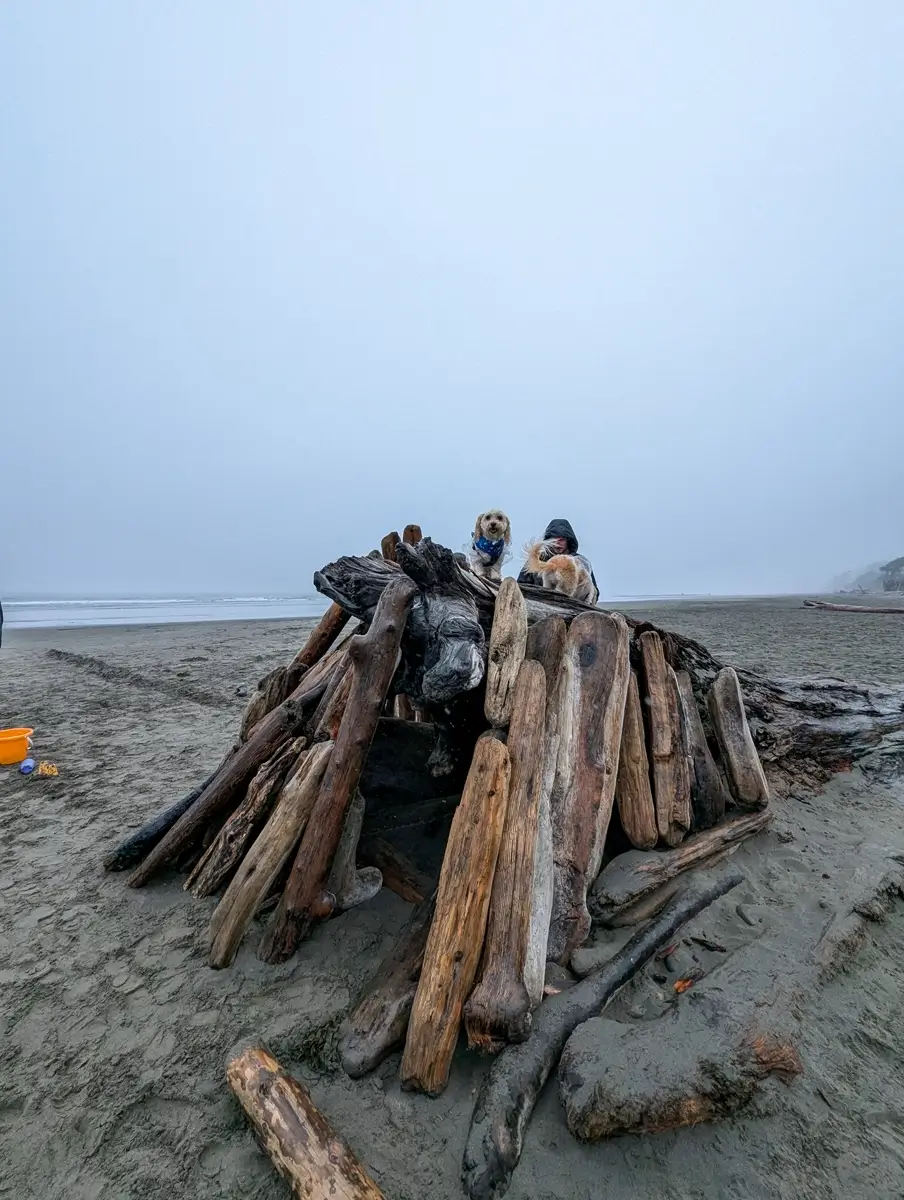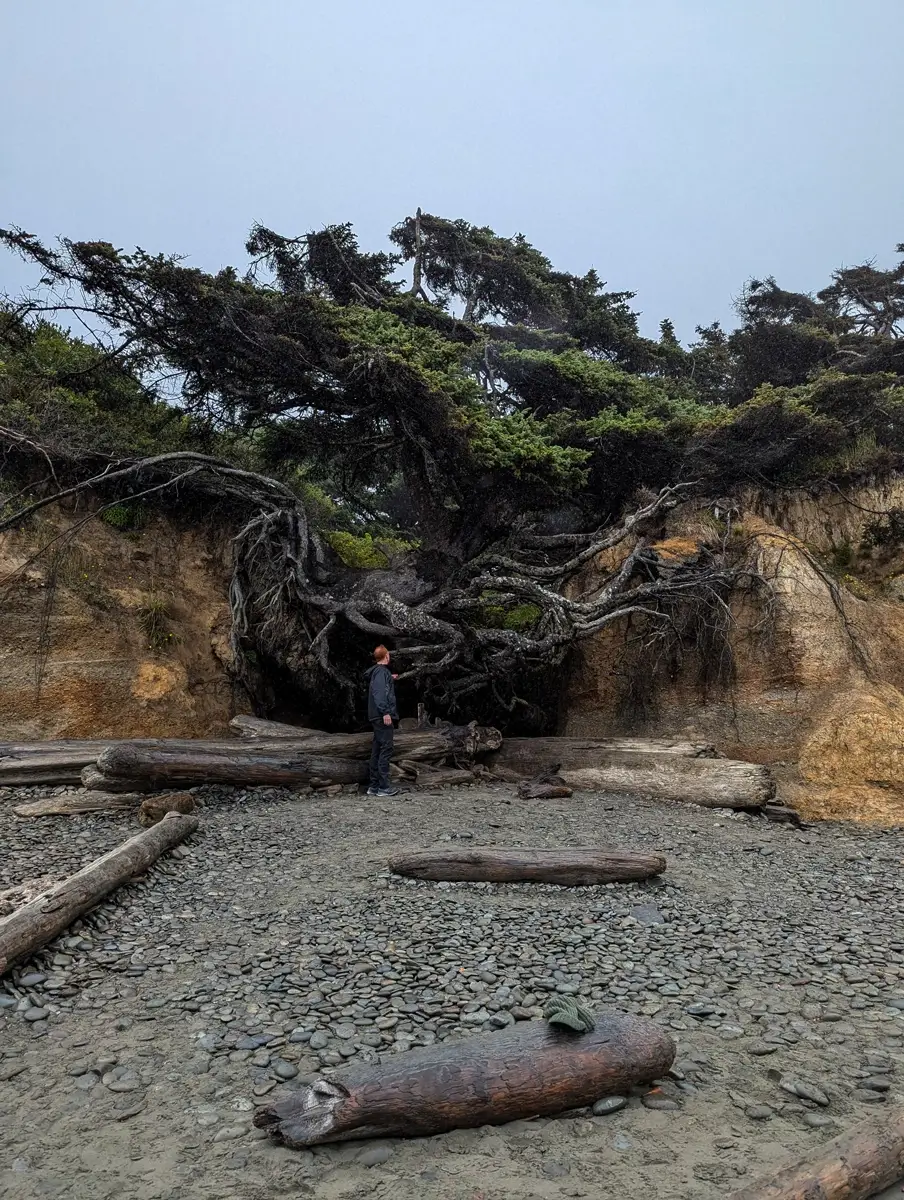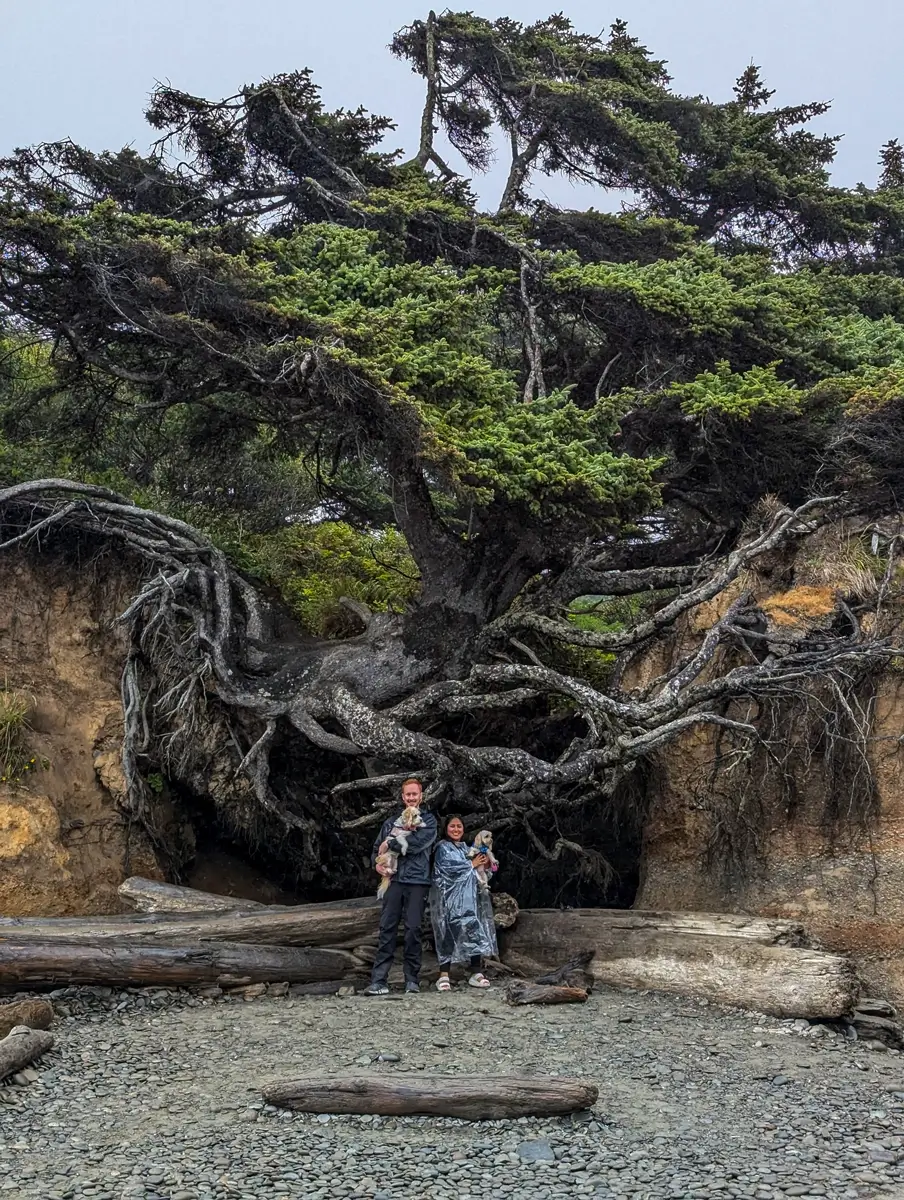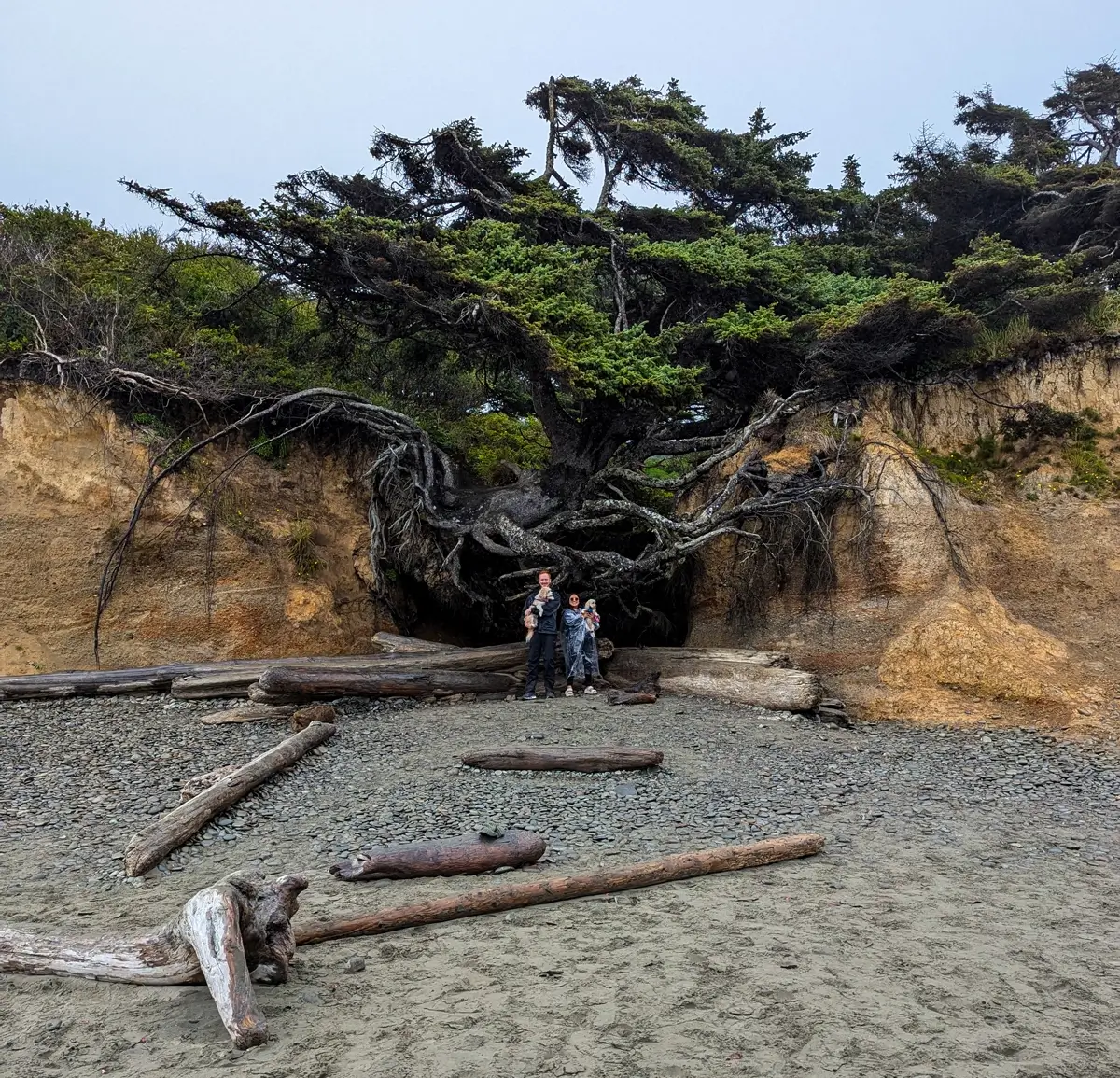When you buy through our links, we may earn a commission. See our Affiliate Policy.
The Tree of Life at Kalaloch Beach, also known as Tree Root Cave, is one of the most fascinating sights in Washington’s Olympic National Park. Just a short walk from the Kalaloch campsite parking lot (and down a somewhat slippery staircase) you’ll find this incredible tree with its roots stretched across a gap between two eroding cliffs. But with constant soil erosion, it won’t hold on forever, making now the perfect time to see it.
Table of Contents
What is the Tree of Life?
Planning a trip to the Olympic Peninsula? With towering Sitka spruce, western hemlock, Douglas fir, and bigleaf maple, you might wonder—what makes this tree so special?
The Tree of Life in Washington is a Sitka spruce tree, a member of the largest species of spruce tree on Earth. And while the tree itself was probably initially growing on solid ground before the soil eroded away beneath it, today, it hangs over a small creek that carves its way through the cliffside before flowing into the ocean.

Its roots hang in midair, yet it still stands strong. And as they sing in Wicked—it’s defying gravity!
There’s even enough room to stand underneath. It can be tempting to get close, touch it and climb on it, but the best way to protect the tree is by admiring it from a distance. It deserves to stick around for as long as possible.
Seriously, this tree is fascinating, if not simply for the fact that it has not been overtaken by other trees and has instead continued to grow and remain green, vibrant, and full of life despite the intense Pacific Northwest coastal storms.
Together, these features give the impression that the tree is “immortal” as it clings to the cliff faces on either side of the gap.
But that’s not to say that its survival has been easy. Over the years, the Tree of Life has endured significant environmental challenges such as record rainfall, landslides and storm surges. Even as recently as January 2025, the tree slumped around five feet after the creek beneath eroded even further.
If you’re thinking about visiting, sooner is better than later.
Where is the Tree of Life Located?
The Tree of Life is located along Highway 101 on the southwest coast of Olympic National Park.

From Forks, head south on Highway 101 for about 34 miles (45 minutes). Once you pass Ruby Beach, you’re getting close! The tree is located at Kalaloch Campground just a few minutes past Kalaloch Lodge.
From Aberdeen, follow Highway 101 north for about 74 miles (1.5 hours). The route takes you along the edge of the Quinault Rainforest before reaching the coastline. Once you pass the turnoff for South Beach Campground, the Kalaloch Campground day-use parking lot is just ahead.
Unlike other areas of Olympic National Park, you don’t need an entrance pass to visit the Tree of Life. Once you’ve parked, visiting the Tree of Life at Kalaloch Beach is easy as it’s accessible to visitors as you only walk a few hundred feet or so.
What to Expect at the Tree of Life
We read that the best time to visit the Tree of Life is during the summer of June through October. When we visited in late July, Kalaloch Beach was just as cloudy, wet and moody as when we visited Ruby Beach.
Kalaloch WeatherIf you’re wondering whether dogs are allowed to visit the Tree, the answer is a resounding yes (as long as they are leashed). Our dogs aren’t the biggest fans of rain and looked pretty unhappy about being out in it. We ended up making makeshift doggy ponchos using grocery bags, but the result was more beach sand trapped inside than protection from the rain.

Even with the rain, about 10 people were waiting for their turn to snap photos. Visitors were kind enough to get a couple shots of us with our dogs. Some of the best photos are taken from a few hundred feet back.
Looking back, I wish we’d taken more close-ups of the tree’s intricate, exposed roots. But we kept our usual camera gear stowed away to avoid the weather.
Other Must-See Stops in Olympic National Park
If you’re visiting the Tree of Life, you’re in a prime spot to explore some of Olympic National Park’s other stunning sights! Here are a few nearby stops worth adding to your itinerary:
- Ruby Beach – Rugged Beauty on the Coast
- A 15-minute drive north of Kalaloch Beach, Ruby Beach is famous for its dramatic sea stacks, driftwood-covered shore, and moody Pacific Northwest vibes.
- Big Cedar – A Giant Worth Seeing & Smelling
- Not far from Kalaloch Campground, this massive Big Cedar tree is a great reminder of how incredible and resilient nature can be.
- Hoh Rainforest – The Hall of Mosses
- About an hour’s drive inland, the Hall of Mosses is one of the most magical places in Olympic National Park complete with towering trees draped in thick, green moss and fern carpeted forest floors.
An Inspiration to Hang On
The Tree of Life in Washington is often featured on social media as a symbol of resilience and perseverance. Inspiring visitors to keep holding on—just as it does. I can see why people find inspiration in it. It’s rare for a tree to survive after losing the very ground that once supported it. Most don’t.


I didn’t come away with a newfound life inspiration from our visit. Instead, I was reminded once again of nature’s remarkable resilience. In a place where storms relentlessly pound the coast, survival isn’t about defying the odds—it’s about doing what nature does best: adapting and enduring.
Have you seen the Tree of Life at Kalaloch Beach? This incredible natural wonder is one of Washington’s most unique sights. What was your impression—an inspiration, a marvel of nature, or something else entirely? Let us know in the comments below!



Leave a Reply